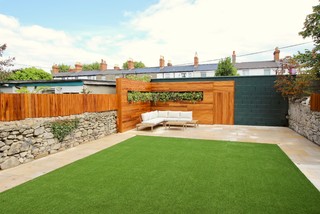Looking to achieve a seamless integration between your landscape and fence? Look no further! At “fencedude.com,” we have you covered. Our blog is dedicated to providing comprehensive and engaging content about fences, covering different types, sizes, shapes, materials, and their suitability for various needs. Our aim is to educate readers on the characteristics and advantages of different fence types, while also addressing considerations such as size, shape, and architectural aspects. With our guidance, you’ll be able to make informed decisions when selecting and installing your fence, ensuring it not only enhances privacy and security but also adds aesthetic appeal to your property. Stay tuned for our list of 200 relevant topics and the most common questions people have about fences. Let’s create a seamless connection between your landscape and fence today!
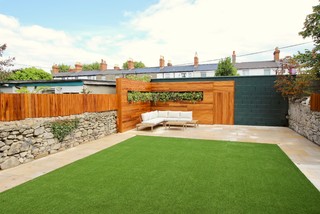
Types of Fences
When it comes to choosing a fence for your property, there are several options to consider. Each type of fence has its own advantages and considerations, so it’s important to understand the differences before making a decision. The most popular types of fences include wooden fences, chain-link fences, vinyl fences, metal fences, and composite fences.
Wooden Fences
Wooden fences are a classic and popular choice for many homeowners. They offer a natural and rustic look that can complement various architectural styles. One of the main advantages of wooden fences is their versatility. They come in various styles, including picket fences, privacy fences, and post-and-rail fences, among others. Wooden fences can be customized to fit the specific needs of your property.
However, there are some considerations to keep in mind when it comes to wooden fences. While they provide privacy and can be aesthetically pleasing, they require regular maintenance such as staining or painting to ensure their longevity. Additionally, wood is susceptible to rot and decay, so it’s important to choose a high-quality wood and treat it properly to prevent damage.
Chain-Link Fences
Chain-link fences are known for their durability and affordability. They are made of interlocking steel wires, forming a woven pattern. Chain-link fences are commonly used in commercial and industrial settings, but they are also suitable for residential properties. One of the major advantages of chain-link fences is their low maintenance requirements. They are resistant to rust and can withstand harsh weather conditions.
However, chain-link fences may not provide the level of privacy that some homeowners desire, as they have gaps between the wires. They can also be easily climbed, which may not be ideal for properties requiring higher security. To enhance privacy, privacy slats or mesh can be added to the chain-link fence.
Vinyl Fences
Vinyl fences have gained popularity in recent years due to their durability and low maintenance requirements. They are made of PVC (polyvinyl chloride) and come in various styles and colors. One of the main advantages of vinyl fences is their resistance to rot, insects, and weather damage. They do not require painting or staining, making them a convenient choice for homeowners.
However, vinyl fences can be more expensive than other types of fences. They may also fade over time due to prolonged sun exposure. It’s important to choose a high-quality vinyl fence to ensure its longevity and color retention.
Metal Fences
Metal fences, such as aluminum or wrought iron fences, offer a combination of durability and aesthetic appeal. They are known for their strength and can provide security and privacy to your property. Metal fences come in various styles and designs, allowing you to choose the one that best suits your architectural preferences. They can be customized with decorative elements for a more elegant look.
The main consideration with metal fences is their potential for rust. While aluminum fences are rust-resistant, wrought iron fences may require regular maintenance to prevent rust. Metal fences can also be more expensive compared to other options, but their durability and long lifespan make them a worthwhile investment.
Composite Fences
Composite fences are made of a combination of wood fibers and recycled plastic materials. They offer the look of wood while providing the durability and low maintenance requirements of plastic. Composite fences are resistant to rot, insects, and weather damage. They come in various styles and colors, allowing you to achieve the desired aesthetic for your property.
However, composite fences may be more expensive than other types of fences. They can also be susceptible to mold or mildew if not properly maintained. It’s important to ensure proper installation and regular cleaning to prevent these issues.
Durability and Maintenance Requirements
When considering the durability and maintenance requirements of different fence types, there are some key factors to keep in mind.
Wooden Fences
Wooden fences require regular maintenance to ensure their durability. They need to be stained or painted every few years to protect the wood from rot and decay. Regular inspections should be done to identify any signs of damage or wear and tear. Additionally, wooden fences may need occasional repairs and replacement of individual boards.
Chain-Link Fences
Chain-link fences are known for their durability and low maintenance requirements. They are resistant to rust and can withstand various weather conditions. However, it’s important to inspect the fence regularly for any signs of damage, such as bent or broken links. Any repairs should be addressed promptly to prevent further damage.
Vinyl Fences
Vinyl fences are designed to be low maintenance. They do not require painting or staining, and they are resistant to rot, insects, and weather damage. Regular cleaning with mild soap and water is usually sufficient to keep the fence looking good. Occasional inspections for any damage or loose components are recommended for proper maintenance.
Metal Fences
Metal fences, such as aluminum or wrought iron, are known for their durability. Aluminum fences are rust-resistant, while wrought iron fences may require regular maintenance to prevent rust. Both types of metal fences should be inspected regularly for any signs of rust, damage, or loose components. Applying a protective coating or paint can help prolong the lifespan of metal fences.
Composite Fences
Composite fences are generally low maintenance, as they are resistant to rot, insects, and weather damage. Regular cleaning with mild soap and water is usually sufficient to keep the fence looking good. It’s important to avoid using harsh chemicals or abrasive materials that can damage the surface of the fence. Inspections should be done periodically to check for any signs of mold or mildew and address them promptly if needed.
Aesthetic Appeal of Different Fence Types
The aesthetic appeal of a fence can greatly enhance the overall appearance of your property. Here’s a look at the aesthetic characteristics of different fence types:
Wooden Fences
Wooden fences are known for their natural and rustic look. They can add warmth and charm to any property. Wooden fences come in various styles, such as picket fences, privacy fences, and post-and-rail fences, among others. The type of wood used and the design of the fence can greatly impact its aesthetic appeal.
Chain-Link Fences
Chain-link fences are often chosen for their practicality rather than their aesthetic appeal. However, there are options available to enhance the look of a chain-link fence. Privacy slats or mesh can be added to provide both privacy and a more visually appealing appearance. Additionally, decorative elements, such as ornamental posts or caps, can be incorporated to elevate the overall look of the fence.
Vinyl Fences
Vinyl fences offer a clean and modern look. They come in various styles and colors, allowing you to choose the one that complements your property. Vinyl fences can mimic the appearance of wood, stone, or metal, providing a versatile range of options to suit different architectural styles.
Metal Fences
Metal fences, such as aluminum or wrought iron, are often chosen for their elegant and timeless look. They can add a touch of sophistication to any property. Metal fences come in various styles, from intricate designs to simple and modern ones. They can be customized with decorative elements, such as finials or scrolls, for added aesthetic appeal.
Composite Fences
Composite fences offer the look of wood while providing a more uniform and consistent appearance. They come in various styles and colors, allowing you to achieve the desired aesthetic for your property. Composite fences can complement both traditional and modern architectural styles.
Choosing the Appropriate Size and Shape of a Fence
When it comes to choosing the appropriate size and shape of a fence, there are several factors to consider. The size and shape of the fence should be based on specific needs and requirements. Here are some considerations to keep in mind:
Considering Property Size
The size of your property will play a significant role in determining the appropriate size of your fence. For larger properties, taller fences may be more suitable to provide privacy and security. On the other hand, smaller properties may require shorter fences to maintain an open and spacious feel.
Desired Level of Enclosure
Consider the level of enclosure you desire for your property. If privacy is a top priority, taller and solid fences, such as wooden or vinyl privacy fences, may be the best option. If you want to define boundaries while still maintaining a sense of openness, a picket fence or a partially open metal fence could be a good choice.
Architectural Considerations
Take into account the architectural style of your property when choosing the size and shape of your fence. The fence should complement the existing design and enhance the overall aesthetic appeal. For example, a modern property may benefit from a sleek and minimalistic fence design, while a traditional property may be better suited for a more ornate and decorative fence.
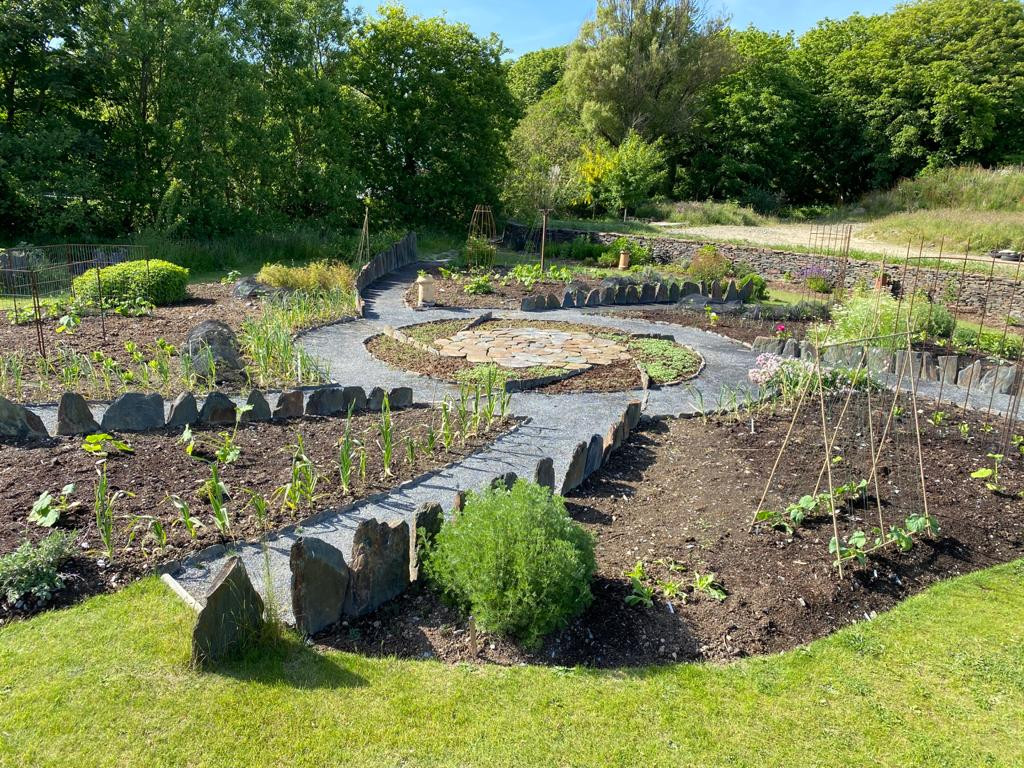
Factors to Consider When Selecting a Fence Type based on Purpose
The purpose of your fence will greatly influence the type of fence that best suits your needs. Here are some common purposes and the factors to consider:
Enhancing Privacy
If privacy is a top priority, fences such as wooden privacy fences or vinyl privacy fences are often the best choices. These types of fences provide a solid barrier that blocks the view from the outside. Considering the height and the material of the fence is important to achieve the desired level of privacy.
Ensuring Security
For properties requiring a higher level of security, fences such as metal fences or chain-link fences can be suitable options. Metal fences can be sturdy and difficult to climb, while chain-link fences can be enhanced with privacy slats and additional security features. Adding a lockable gate to the fence can also help enhance security.
Enclosing a Backyard
When enclosing a backyard, the level of enclosure desired should be considered. If you want to maintain an open and spacious feel, a picket fence or a metal fence with decorative elements can be a good choice. If privacy is a concern, a vinyl or wooden privacy fence can provide the needed seclusion.
Adding Decorative Elements
If the main purpose of your fence is to add decorative elements to your property, consider options such as wrought iron fences or composite fences. These types of fences come in various styles and designs that can complement the existing architectural features of your property. Adding decorative caps, scrolls, or finials can further enhance the visual appeal of the fence.
Benefits of Wooden Fences
Wooden fences offer several benefits that make them a popular choice among homeowners. Here are some of the key advantages of wooden fences:
-
Aesthetic Appeal: Wooden fences provide a natural and rustic look that can complement various architectural styles. They add warmth and charm to any property.
-
Versatility: Wooden fences come in various styles, such as picket fences, privacy fences, and post-and-rail fences, among others. They can be customized to fit the specific needs and preferences of your property.
-
Privacy: Wooden privacy fences offer a solid barrier that blocks the view from the outside, providing a high level of privacy for your property.
-
Customization Options: Wooden fences can be stained or painted in various colors to match the style of your property. They can also be customized with decorative elements, such as lattice panels or caps.
-
Durability: With proper maintenance, wooden fences can last for many years. Choosing a high-quality wood and treating it properly can help prevent rot and decay.
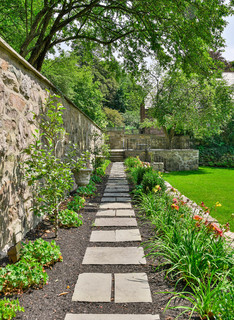
Considerations for Wooden Fences
While wooden fences offer several benefits, there are some considerations to keep in mind before choosing a wooden fence for your property:
-
Maintenance: Wooden fences require regular maintenance to ensure their durability. They need to be stained or painted every few years to protect the wood from rot and decay. Regular inspections and repairs are also necessary to address any damage or wear and tear.
-
Susceptibility to Damage: Wood is susceptible to rot, insects, and weather damage. It’s important to choose a high-quality wood and treat it properly to prevent these issues. Regular inspections and prompt repairs are essential to maintain the integrity of the fence.
-
Cost: The cost of wooden fences can vary depending on the type of wood used, the size of the fence, and any additional features or customization. Wooden fences can be more expensive compared to other types of fences, especially if higher-quality wood or decorative elements are chosen.
-
Limited Lifespan: Despite proper maintenance, wooden fences have a limited lifespan compared to some other fence types. Rot, decay, and weather damage can eventually take a toll on the wood. Planning for fence replacement in the future is something to consider.
-
Fire Risk: Wooden fences can be susceptible to fire. It’s important to consider the fire risk in your area and take precautions, such as choosing fire-resistant wood or adding fire-resistant coatings.
Benefits of Chain-Link Fences
Chain-link fences offer several benefits that make them a popular choice for both residential and commercial properties. Here are some of the key advantages of chain-link fences:
-
Durability: Chain-link fences are known for their durability. They are made of interlocking steel wires, forming a woven pattern that can withstand various weather conditions. They are resistant to rust and corrosion, making them suitable for long-term use.
-
Affordability: Compared to other types of fences, chain-link fences are generally more affordable. The materials used and the installation process make them a cost-effective option for properties with budget constraints.
-
Low Maintenance: Chain-link fences require minimal maintenance. They are resistant to rust and can withstand harsh weather conditions without damage. Occasional inspections and minor repairs are usually sufficient to keep the fence in good condition.
-
Versatility: Chain-link fences are suitable for a wide range of applications. They can be used for residential properties, commercial properties, schools, parks, and more. They can be customized with additional features, such as privacy slats or mesh, to meet specific needs.
-
Security: Chain-link fences can provide a certain level of security for your property. They create a physical barrier that can deter trespassers and keep pets or children safely contained. For enhanced security, additional measures such as barbed wire can be added.
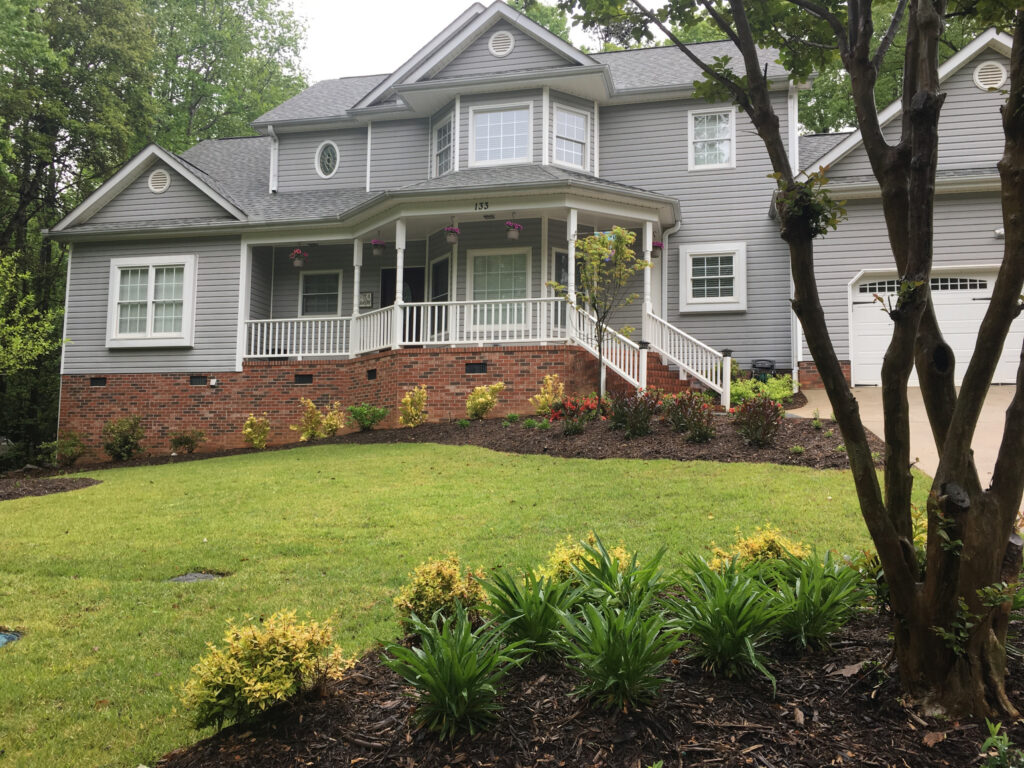
Considerations for Chain-Link Fences
While chain-link fences offer several benefits, there are some considerations to keep in mind before choosing a chain-link fence for your property:
-
Privacy: Chain-link fences may not provide the desired level of privacy, as they have gaps between the wires. However, privacy slats or mesh can be added to the fence to enhance privacy without sacrificing the durability and affordability of chain-link fences.
-
Climbability: Chain-link fences can be easily climbed, especially if they are low in height. For properties requiring higher security, additional measures such as a locked gate or barbed wire may be necessary to deter climbers.
-
Aesthetic Appeal: Chain-link fences are often chosen for their practicality rather than their aesthetic appeal. However, there are options available to enhance the look of a chain-link fence. Decorative elements, such as ornamental posts or caps, can be added to elevate the overall appearance.
-
Noise Reduction: Chain-link fences do not provide significant noise reduction compared to other types of fences. If noise reduction is a concern, considering additional measures such as acoustic panels or landscaping can help mitigate noise levels.
-
Long-Term Maintenance: While chain-link fences have low maintenance requirements, it’s important to regularly inspect the fence for any signs of damage, such as bent or broken links. Prompt repairs should be done to prevent further damage and ensure the longevity of the fence.
Benefits of Vinyl Fences
Vinyl fences have become increasingly popular in recent years due to their durability and low maintenance requirements. Here are some of the key advantages of vinyl fences:
-
Durability: Vinyl fences are designed to be highly durable. They are made of PVC (polyvinyl chloride), which is resistant to rot, insects, and weather damage. Vinyl fences can withstand extreme temperatures without warping, cracking, or fading.
-
Low Maintenance: One of the main advantages of vinyl fences is their low maintenance requirements. They do not require painting or staining, unlike wooden fences. Regular cleaning with mild soap and water is usually sufficient to keep the fence looking good.
-
Variety of Styles and Colors: Vinyl fences come in various styles and colors, allowing you to choose the one that best suits your property. They can mimic the appearance of wood, stone, or metal, providing a versatile range of options to complement different architectural styles.
-
Long Lifespan: Vinyl fences have a long lifespan when properly installed and maintained. They are resistant to rot, decay, and weather damage, ensuring that they can last for many years without significant deterioration.
-
Cost-Effective: While vinyl fences may be more expensive upfront compared to some other types of fences, their low maintenance requirements and long lifespan make them a cost-effective choice in the long run. They require minimal repairs and no painting or staining, saving time and money.
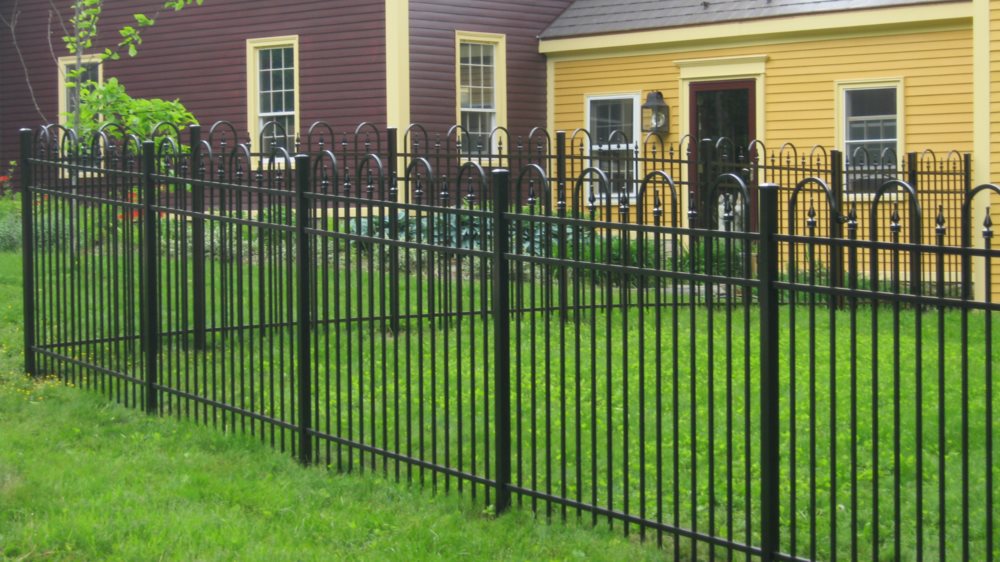
Considerations for Vinyl Fences
While vinyl fences offer several benefits, there are some considerations to keep in mind before choosing a vinyl fence for your property:
-
Upfront Cost: Vinyl fences can be more expensive than some other types of fences, especially if higher-quality vinyl or customization options are chosen. It’s important to consider the budget constraints and weigh the long-term cost savings against the initial investment.
-
Color Fading: Vinyl fences may fade over time due to prolonged sun exposure. While high-quality vinyl fences are more resistant to fading, it’s important to choose a well-rated product and confirm any warranty or guarantee provided by the manufacturer.
-
Limited Repair Options: In the event of damage to a vinyl fence, full replacement may be necessary as repairs can be difficult. It’s important to handle vinyl fences with care to prevent accidental damage, and to follow any manufacturer guidelines for maintenance and repairs.
-
Environmental Impact: While vinyl fences are low maintenance and do not require painting or staining, their production process involves the use of PVC, which is derived from petroleum. It’s important to consider the environmental impact and explore eco-friendly alternatives if sustainability is a concern.
-
Installation Considerations: Vinyl fences require proper installation to ensure their durability and longevity. It’s recommended to hire a professional installer with experience in working with vinyl fences to ensure a proper and secure installation.
Benefits of Metal Fences
Metal fences, such as aluminum or wrought iron, offer a combination of durability and aesthetic appeal. Here are some of the key advantages of metal fences:
-
Strength and Durability: Metal fences, especially those made of aluminum or wrought iron, are known for their strength and durability. They can withstand harsh weather conditions and provide a long-lasting fencing solution.
-
Security: Metal fences can provide a high level of security for your property. They create a physical barrier that is difficult to breach. The strength and height of metal fences can deter trespassers and protect your property.
-
Aesthetic Appeal: Metal fences offer an elegant and timeless look that can enhance the overall appearance of your property. They come in various styles, from intricate designs to simple and modern ones, allowing you to choose the one that best suits your architectural preferences.
-
Customization Options: Metal fences can be customized with decorative elements, such as ornamental posts, caps, finials, or scrolls. These additional features can add a touch of sophistication and personalize the fence to match your property’s style.
-
Low Maintenance: Metal fences, especially those made of aluminum, require minimal maintenance. They are resistant to rust and can withstand various weather conditions without damage. Occasional inspections and minor repairs are usually sufficient to keep the fence in good condition.
Composite Fences Q&A
Q1: Are composite fences more expensive than other types? A1: Composite fences can be more expensive compared to some other types of fences upfront. However, they offer low maintenance requirements and resistance to rot, insects, and weather damage, which can result in long-term cost savings.
Q2: Can I paint or stain a composite fence? A2: Composite fences are designed to be low maintenance and do not require painting or staining. They come in various styles and colors, allowing you to choose the one that best suits your property.
Q3: What is the lifespan of a composite fence? A3: The lifespan of a composite fence can vary depending on the quality of the materials used and proper maintenance. With proper installation and maintenance, composite fences can last for many years.
Q4: Can composite fences withstand extreme temperatures? A4: Composite fences are designed to withstand extreme temperatures without warping, cracking, or fading. They are resistant to rot, decay, and weather damage.
Q5: Can I install a composite fence by myself? A5: While it’s possible to install a composite fence by yourself, it’s recommended to hire a professional installer with experience in working with composite fences. Proper installation is crucial to ensure the durability and longevity of the fence.
Q6: Can I attach accessories to a composite fence, such as mailboxes? A6: Yes, you can attach accessories to a composite fence, such as mailboxes or decorative elements. It’s important to follow the manufacturer’s guidelines and use appropriate attachment methods to avoid damaging the fence.
Q7: Are composite fences eco-friendly? A7: Composite fences are often considered more eco-friendly compared to some other types of fences. They are made of a combination of wood fibers and recycled plastic materials, reducing the demand for new wood and plastic resources.
Q8: Can I install a composite fence on uneven terrain? A8: Composite fences can be installed on uneven terrain. However, it’s important to properly prepare the ground and adjust the fence panels accordingly for a secure and stable installation.
Q9: Can I add privacy panels to a composite fence? A9: Yes, privacy panels can be added to a composite fence to enhance privacy and create a more secluded environment. Privacy panels come in various styles and can be easily installed on a composite fence.
Q10: Are composite fences susceptible to mold or mildew? A10: Composite fences can be susceptible to mold or mildew if not properly maintained. Regular cleaning and avoiding moisture buildup can help prevent mold or mildew growth on the fence.
